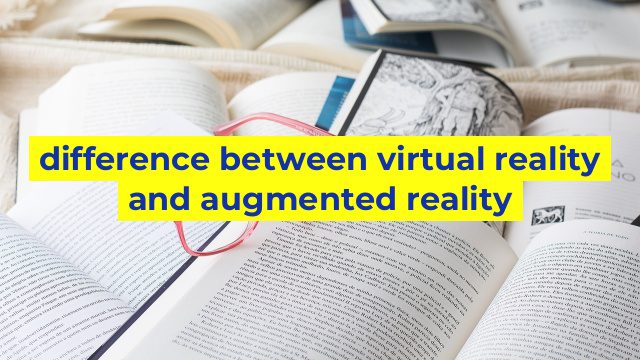The Key Differences Between Virtual Reality and Augmented Reality
As technology continues to advance, various new buzzwords have emerged, such as virtual reality (VR) and augmented reality (AR). While these two terms are often used interchangeably, they are not the same thing. In fact, there are several key differences between VR and AR, which are highlighted below.
Defining Virtual Reality and Augmented Reality
Virtual reality is a technology that creates a completely immersive experience that replaces the real world. It uses a computer-generated environment to create a simulated sensory experience, making the user feel as though they are inside the environment. To experience VR, the user wears a headset that blocks out the real world and replaces it with a virtual one.
Augmented reality, on the other hand, is a technology that enhances the real-world environment by overlaying computer-generated elements onto it. It typically involves the use of a mobile device camera or smart glasses to superimpose graphics, text, or images onto the real world. AR technology is also sometimes referred to as “mixed reality.”
How They Work
Both VR and AR are typically powered by computer vision algorithms and machine learning. VR works by tracking the user’s movements through sensors and displaying the environment accordingly. This means that the user can interact with the virtual environment as if it were real.
AR also uses computer vision to track the user’s real-world environment and overlay graphics on top of it. This enables users to interact with the augmented environment in real-time while still remaining aware of their real-world surroundings.
Use Cases
VR is often used in gaming and entertainment, as well as in training simulations for healthcare, military, and aviation. It can also be used in areas like architecture and engineering to create virtual prototypes of buildings and structures.
AR has a wider range of applications, including advertising, e-commerce, and education. It is also used in the automotive industry to create AR versions of car interiors and exteriors. AR is also used by retailers to create virtual try-on experiences for customers.
Conclusion
In summary, while VR and AR are similar in that they both use computer-generated imagery, they have distinct differences in terms of their purpose and functionality. VR creates a completely immersive experience that replaces the real world, while AR enhances the real-world environment by overlaying digital content. Ultimately, both technologies have exciting potential for a wide range of industries, and it will be interesting to see how they continue to evolve in the coming years.
Table difference between virtual reality and augmented reality
| Virtual Reality | Augmented Reality |
|---|---|
| Virtual reality is a completely immersive experience where the user is transported to a virtual world that may or may not be based on reality. | Augmented reality overlays digital content onto the real world, enhancing the user’s experience of reality. |
| Virtual reality requires a headset, which completely envelops the user’s vision and often includes a set of headphones or speakers for audio input. | Augmented reality can be experienced through a variety of devices, such as a smartphone or tablet, and may or may not require additional hardware. |
| Virtual reality is often used for gaming, education, and training purposes, as well as for simulations of dangerous or inaccessible environments. | Augmented reality is used in a variety of industries, including advertising, retail, and tourism, to provide users with additional information and enhance their experience. |
| Virtual reality completely replaces the user’s physical surroundings, making it difficult to interact with real-world objects while immersed in the virtual world. | Augmented reality allows users to interact with both digital and physical objects simultaneously, making it easier to integrate into everyday life. |


